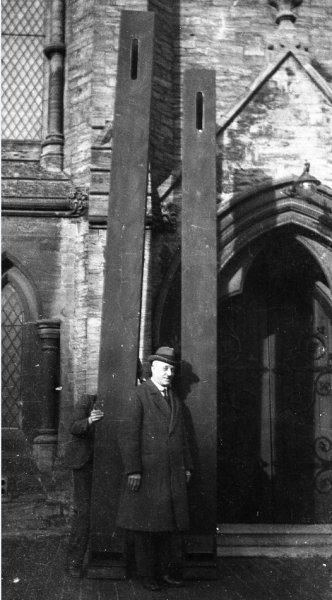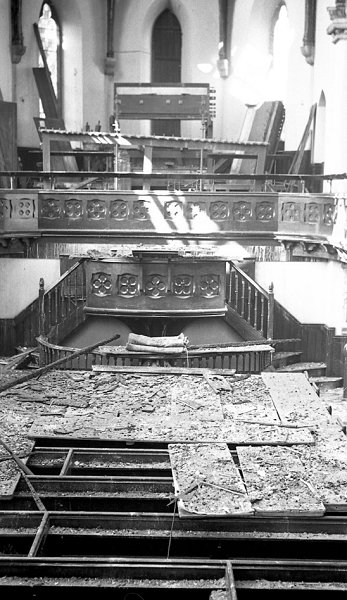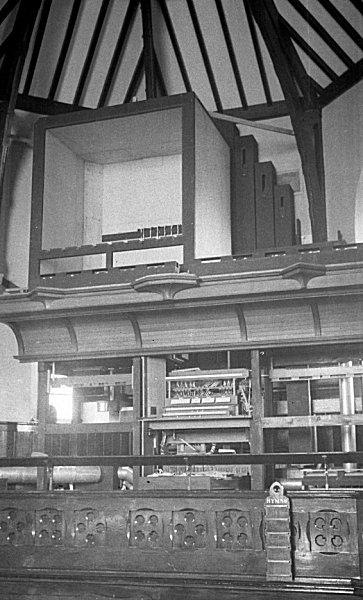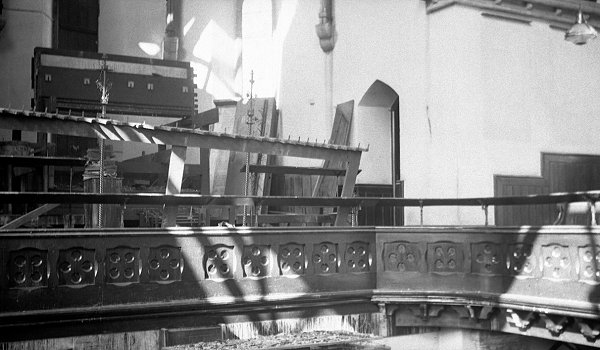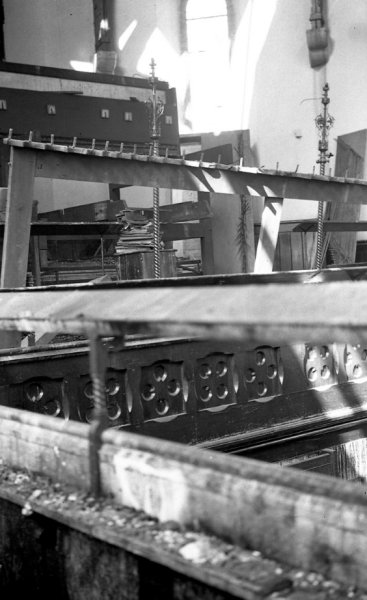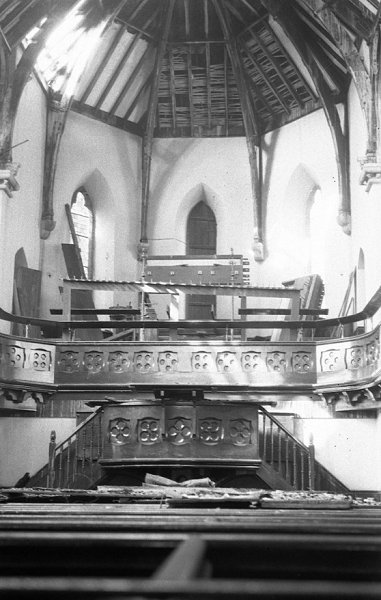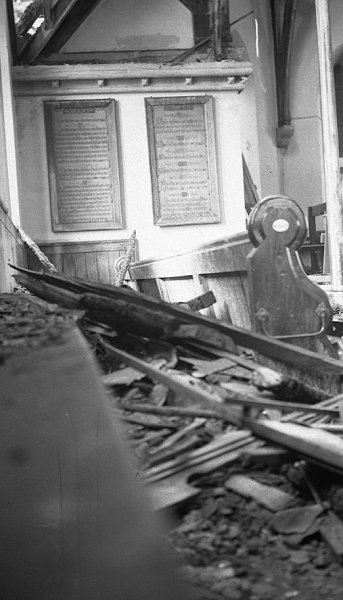vicarage street methodist church
vicarage street methodist church
The Wesleyan Methodist church
John Wesley passed through Yeovil in 1751 and in its edition of 12 June 1752 the Derby Mercury reported "By a Letter from Yeovil in Somersetshire, we are informed, that the Methodist Preachers in those parts had met with such rough Treatment, that they had found it convenient to withdraw themselves from thence." Nevertheless, for the next seventy years preachers from Sherborne travelled to Yeovil to hold Sunday meetings in a thatched cottage in Vicarage Street, close to the present Methodist church. In 1824 a Wesleyan chapel was built in Middle Street at a cost of £813 5s 4d (around £2¾ million at today's value).
|
Church Congregations From the Ecclesiastic Survey, March 1851 |
|
|
St John's |
614 |
|
Holy Trinity, Peter Street |
550 |
|
Congregational (now United Reformed), Princes Street |
530 |
|
Baptist, South Street |
300 |
|
Methodist, Middle Street |
250 |
|
Calvinist Baptist, Tabernacle Lane |
190 |
|
Brethren Hall, Vicarage Street |
93 |
|
Quaker Meeting House, Kingston |
8 |
In 1869-1870 the new Wesleyan Methodist church was built in Vicarage Street and opened on 30 March 1870. The Southern Times, in its edition of 9 April 1870, reported "The architect was Mr Alexander Lander of Barnstaple; and the contractors by whom the work has been very satisfactorily and creditably carried out are Messrs Bartlett & Son, of Coker, and Mr Charles Harwood, of Yeovil. The building, which cost £3,289 [around £450,000 at today's value] including purchase of land, is in the Early English Gothic style, and built entirely of the local Ham-hill stone".
In its edition of 1 April 1870 the Western Gazette recorded "The first service was held in the chapel at 11 o'clock in the forenoon when there was a large congregation comprising representatives of Wesleyan Methodism from Sherborne, Bridport, Ilchester, Yetminster, Gillingham, Shaftesbury and indeed almost every town and considerable village within a radius of many miles."
An early Wesleyan Methodist Local Preacher here was grocer Walter Wesley Sawtell.
Following the opening of the new church, the earlier chapel in Middle Street was used for a time as a Sunday School but was sold off in 1873 for £350 (around £400,000 at today's value). The chapel was finally demolished in 1972.
In the afternoon of Saturday 9 June 1934 a fire broke out at the rear of the church and quickly took hold throughout the building and setting the roof ablaze. Unfortunately at the time the Yeovil Volunteer Fire Brigade were taking part in a national firefighting competition at Minehead so it fell to the Sherborne Fire Brigade, assisted by the Yeovil Boy's Brigade to tackle the fire. Although the church suffered from severe water damage as well as the flames, the main fabric of the church was saved, as were the church marriage registers which had been rescued by the Reverend F Taylor who dashed back into the burning building to save the registers.
On Monday 7 October 1940 the first Luftwaffe raid on Yeovil occurred in the afternoon when a flight of twenty Junkers JU88 twin-engine medium bombers dropped over thirty high explosive bombs and eighteen oil bombs on Yeovil. Burton's outfitters shop next to Woolworth's in Middle Street was destroyed killing eight and a direct hit on the Methodist church's public shelter killed a further four people. The church itself also suffered damage.
In 1983 the church met its greatest threat ever when buildings all around it were demolished to clear the site for the Quedam shopping centre project. Apart from a couple of shops close to the Triangle, the church is the only Vicarage Street building to have escaped demolition.
Today the church has an active congregation and is part of the Yeovil and Blackmore Vale Methodist Circuit.
gallery

The notice placed in the Western Gazette's edition of 26 November 1869 confirming that marriages could take place at the Middle Street chapel.

From the Cave
Collection
(colourised),
Courtesy of South Somerset Heritage Collection
This photograph
features in my
book 'Yeovil
From Old
Photographs'
A view of the Lower Middle Street, just off the Triangle, store that was originally Thomas Jesty's furniture store but at the time of this photograph was premises of the Yeovil & District Co-op, with the old Methodist chapel at centre. The chapel was demolished in 1972 and the site is now occupied by Poundland.

This photograph was taken by Yeovil Photographer Jarratt Beckett and published in his 1897 book "Somerset viewed through a Camera".
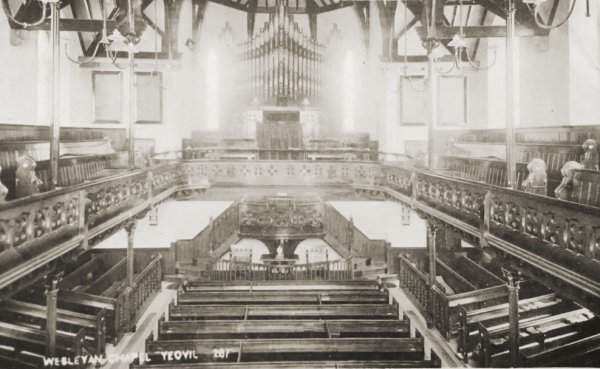
A 1907 postcard of the interior of the church.
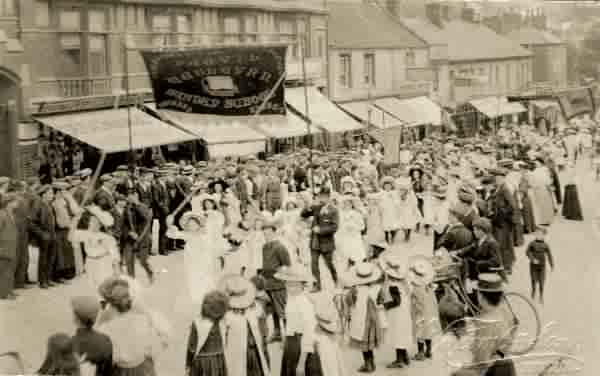
Photographed around 1910, children of the Wesleyan Sunday School parade along Lower Middle Street towards the Triangle and the Wesleyan Methodist church in Vicarage Street.
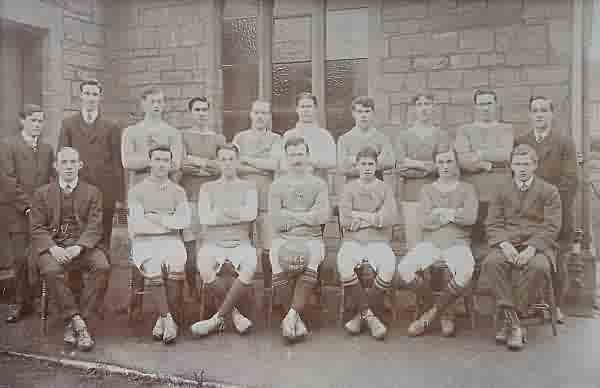
From my
collection
The Wesleyan Football Club 1912-13.

From my
collection
-
This photograph
features in my
book 'Yeovil
From Old
Photographs'
The Wesleyan Methodist church, built in 1870, on an undated postcard by Henry Thomas Balls. The stamp box on the reverse reads "Affix Halfpenny Stamp" which dates the postcard to before 3 June 1918, when the price rose to one penny.
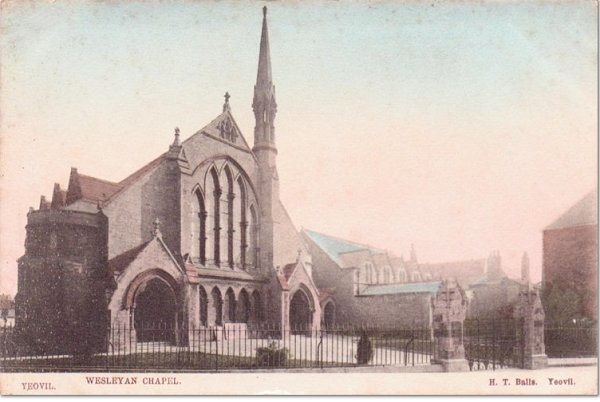
From my
collection.
This
image
features in my
book 'Yeovil
- The Postcard
Collection'.
A hand-coloured version of the previous postcard, post-marked 1906.

A colourised photograph taken around 1900, as above but from a slightly different angle such that the cottage at left is included in the shot.
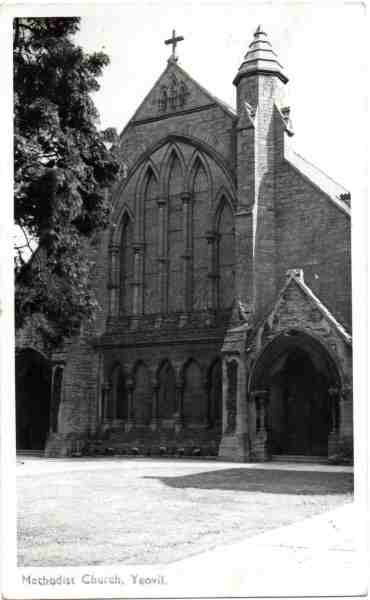
From my
collection
A black & white postcard of the church dating to 1962. Note the absence of the spire, seen in the earlier photographs. It was damaged in the bombing raid of 7 October 1940 (see below).
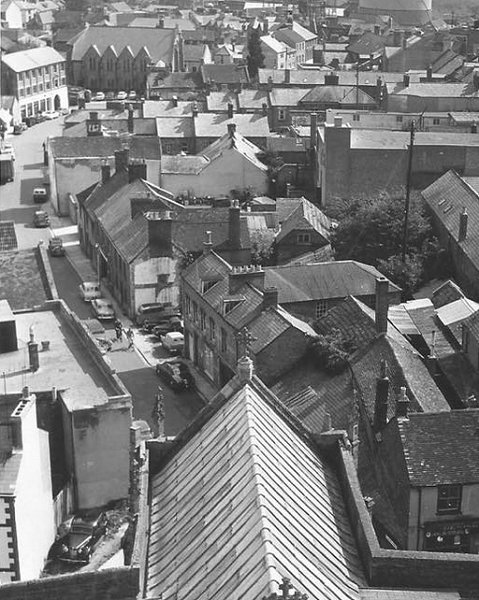
The whole of Vicarage Street as seen from the tower of St John's church in the early 1960s. Vicarage Street runs from its junction with Silver Street (obscured by St John's chancel roof at centre bottom) up to the premises occupied by Neal and Williams (later with a new front elevation) before veering right, in front of the Methodist church, and joining Middle Street at the Triangle at top right.

A photograph of Vicarage Street taken in 1982, this photograph looks east towards the Methodist church - the only building that survives, albeit without its spire, today from this photograph.

The church amidst the demolition of Vicarage Street in readiness for the Quedam Centre in 1983. The church was the only building in Vicarage Street to survive.
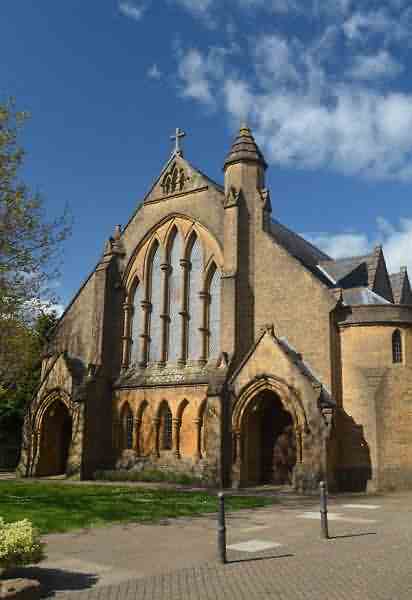
This photograph
features in my
book "Yeovil
In 50 Buildings"
The church photographed in 2017.
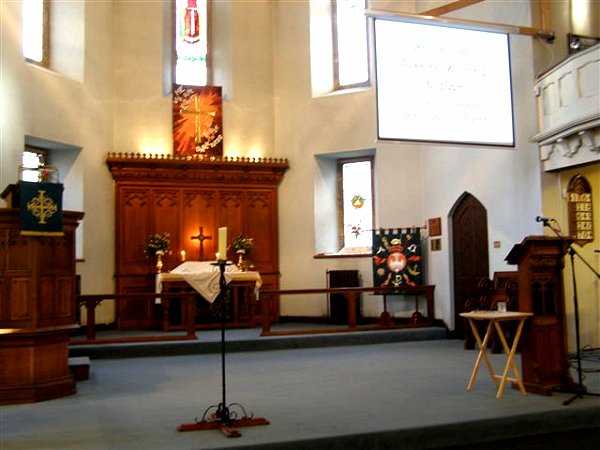
Courtesy of the
Methodist
Church, Yeovil &
Blackmore Vale
Circuit
Interior photograph.
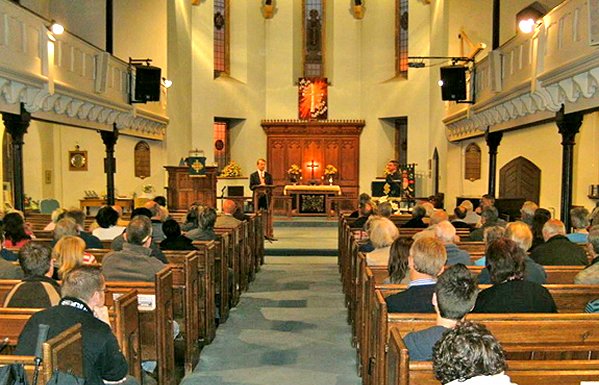
Courtesy of the
Methodist
Church, Yeovil &
Blackmore Vale
Circuit
Another interior photograph.
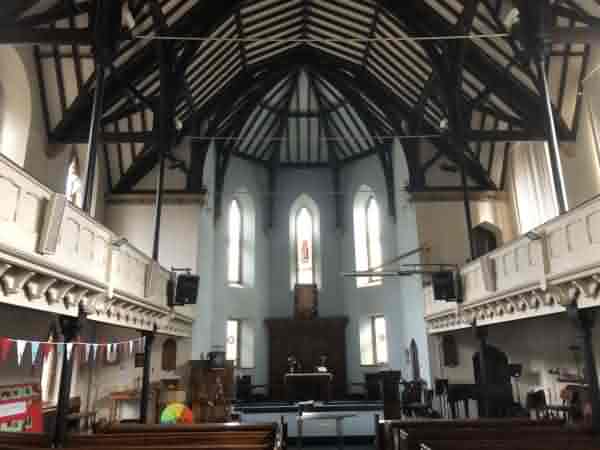
The church interior, looking towards the apse. Photographed in 2021.
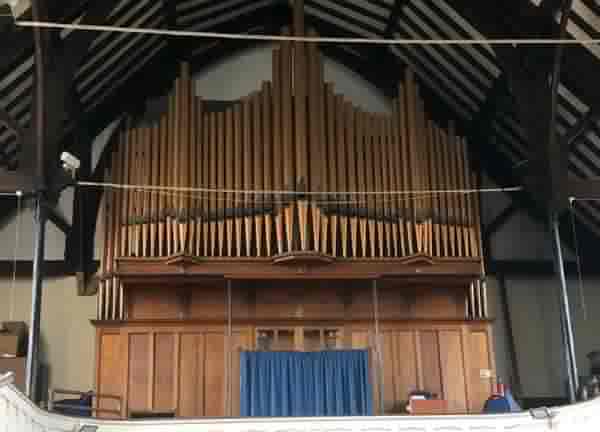
... and the organ at the opposite end of the church. Photographed in 2021.
The bomb damage of Monday 7 October 1940
I am most grateful to Tony Hodson for allowing me to use the following photographs which show the damage caused to the church by the German air raid of 7 October 1940.
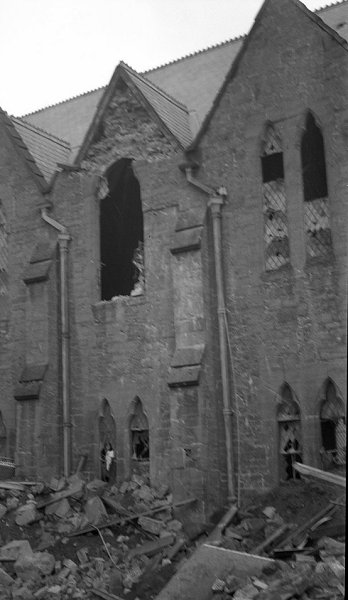
This photograph
features in my
book 'Yeovil
From Old
Photographs'
